I have known Tobias Bärtschi for about twelve years. After first steps on an inexpensive entry-level instrument, I was looking for an upgrade at that time, and Tobias already had a reputation for producing virtuoso top horns. After all, no less a person than Joszef Molnar dedicated a “carte de visite” to him, and in it described him as the best alphorn maker in Switzerland. So I acquired an unwound Bärtschi horn (now his “Solist” model), with which I have developed an intimate relationship over time. Visiting him for this portrait was therefore something like seeing an old friend again.
Tobias is a full-blooded musician. Already in his youth he played trumpet and trombone. He also completed military service in the Army game. Later followed jazz school and engagements in big bands. In addition, he trained as a cabinetmaker and restorer. Thanks to the latter, he now has a profound knowledge of varnishes, oils and glues, among other things. His first contact with alphorn making was with Josef Stocker. Tobias worked for him for about three years. He still speaks with much respect of the Stocker horns, which he believes are underrated. Later, when he began making alphorns himself, he adopted the basics of the curved bore, but focused on a thin-walled “Bernese” horn. Another important fellow alphorn maker is Toni von Gunten. Tobias got Toni to build the alphorn back then, describes him admiringly as a “genius inventor” and emphasizes that their alphorns sound great together. Until recently, Toni also milled mensur and cups on the CNC machine they purchased together – now Tobias wants to work more by hand again. He is convinced that an alphorn only really sounds when it is finished by hand.
The Bärtschi alphorns have always been showers. In the meantime, unwound alphorns are no longer a unique selling point. But the attention to detail is still evident in the beautiful rings on the cup part. Unique are the inlays that Tobias applies to about one of seven alphorns (see in the video here, starting at about 2:55). Often they are Swiss crosses in red plum wood, landscape and animal paintings. During my visit, he was working on the image of a hornless [!] cow. He has also made a skull from Russian birch with teeth from white bone. Inlay pictures are costly and therefore not a cheap thing. But those who also see their alphorn as a capital investment will not regret such an extra investment.
Over the last ten years Tobias has changed the design of his alphorns in detail. I noticed that the hand tubes got a little thicker – the wall thickness decreases even more significantly from the keg to the cup. With a weight of about 2.5kg, they remain light alphorns. Similar to Toni, he now offers a removable swing base (also as a retro-fit). For some time now, he has also been producing four-piece mugs. He obtains the spruce wood for this – not always hazel spruce and moon wood – from a sawmill in the Melchtal. Tobias no longer builds glossy lacquered alphorns since he found an excellent matte lacquer. He has also found a better product for the oil used inside.
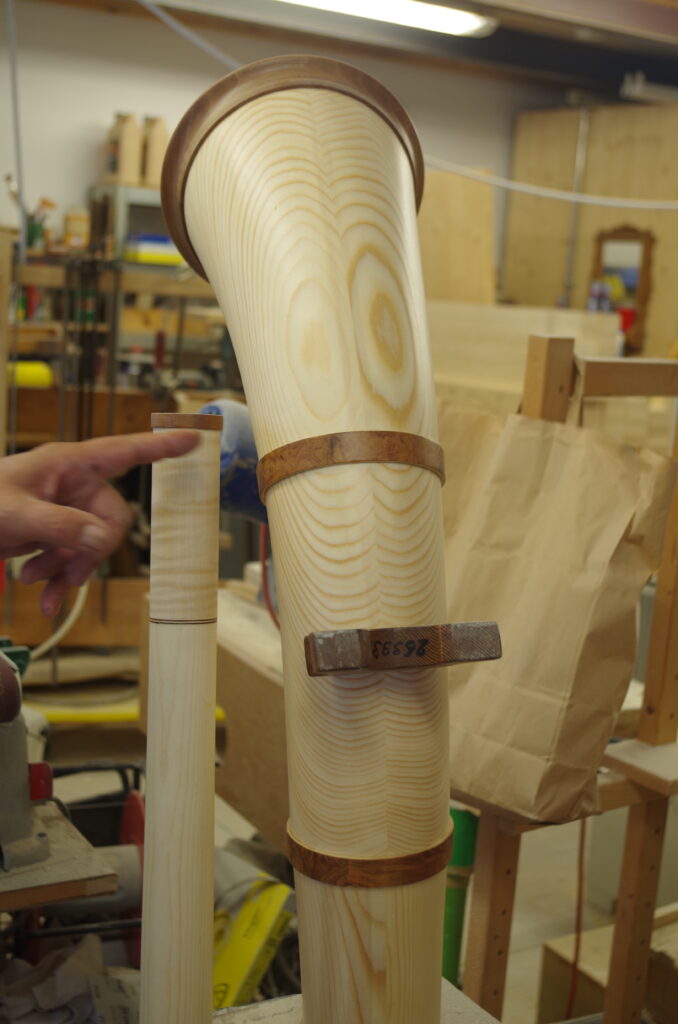
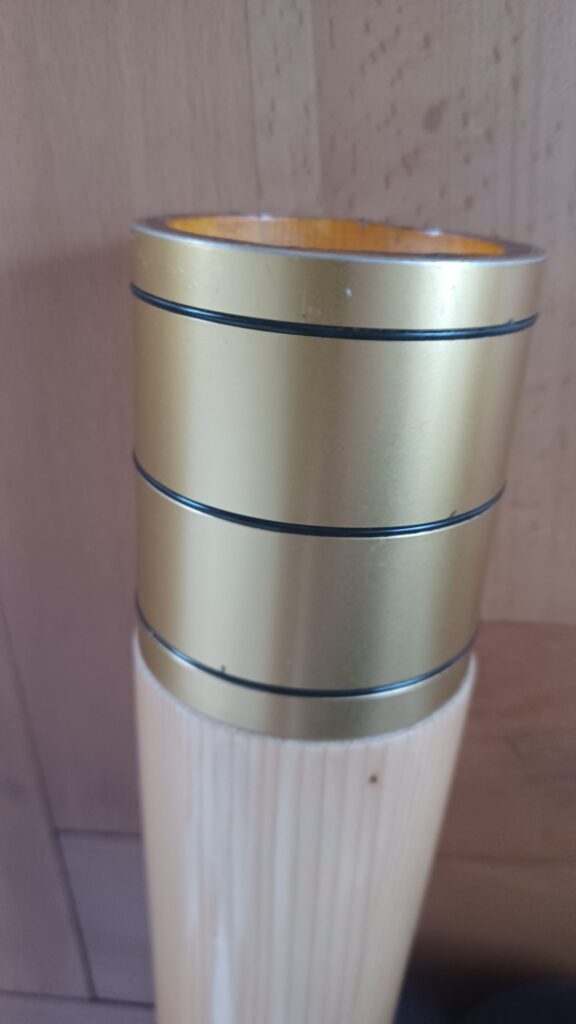
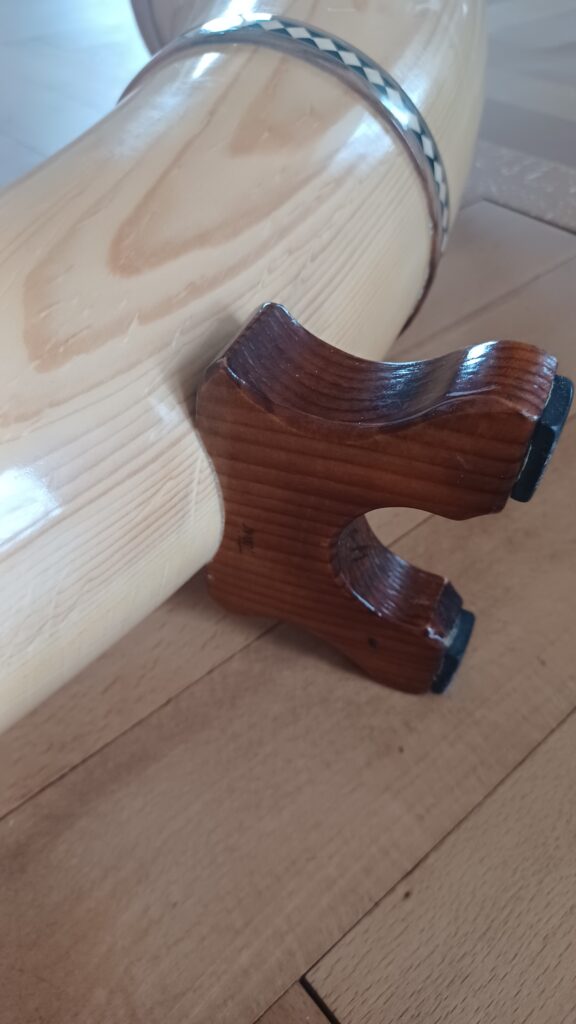
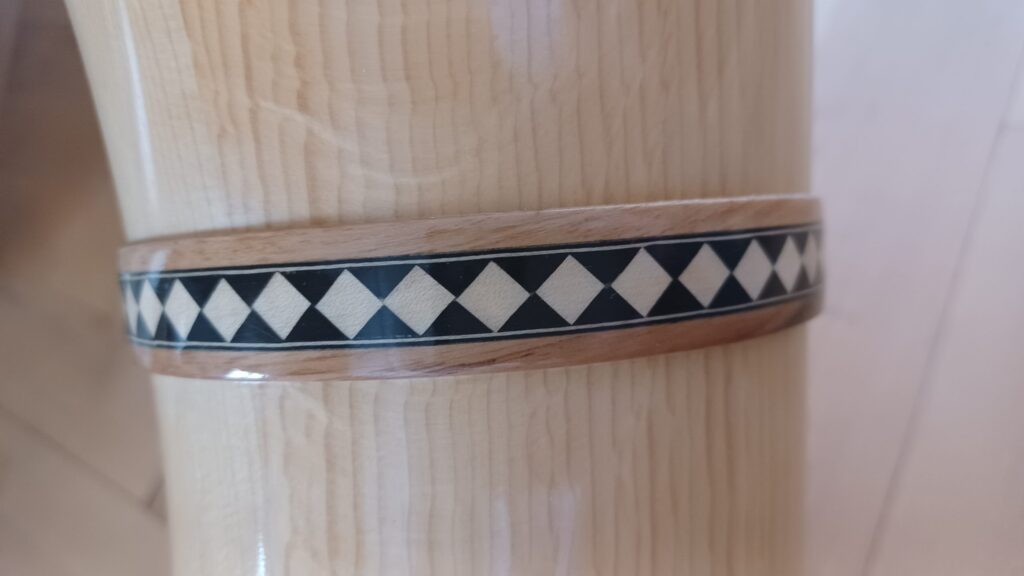
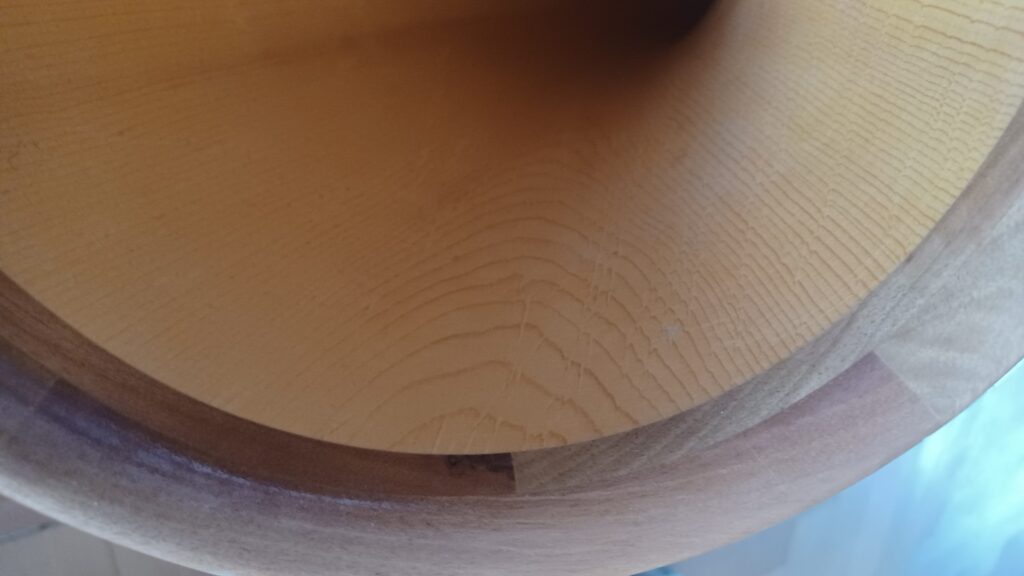
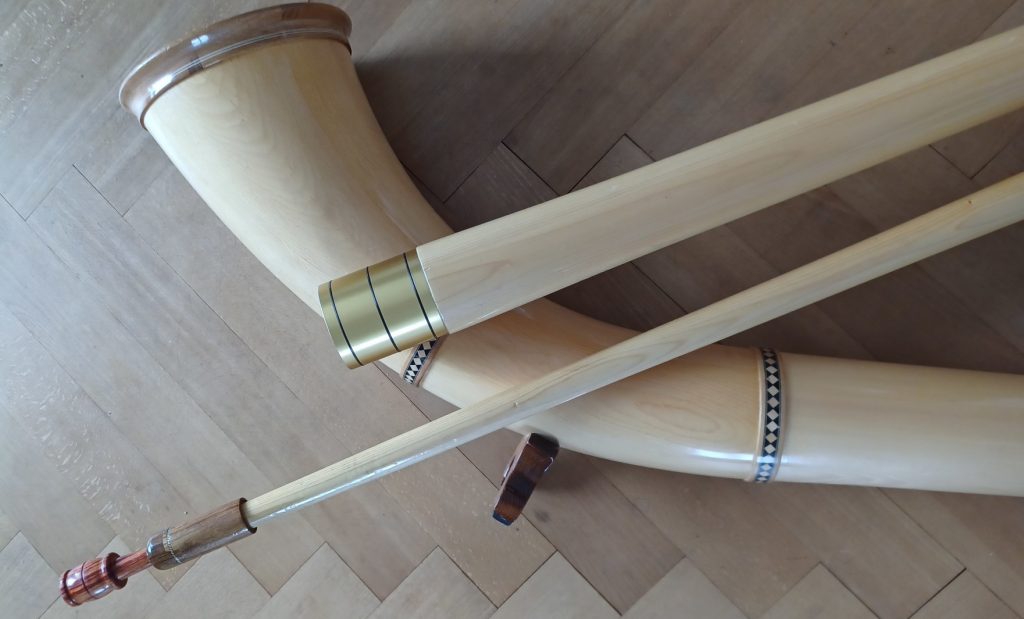
As a long-time owner of an (unwound) Bärtschi Alphorn, I know its strengths (and weaknesses) well, but I may no longer be completely objective. One thing is clear: when played together with others, the alphorn intonates excellently over the entire range (tuning a1=442Hz). It responds very quickly with little air and sounds rich in overtones and brilliant up to the high registers. Its greatest strength lies in its agility in both fast and very dynamic passages. I have yet to find an alphorn on which I could have played similarly cleanly at piano pianissimo. The instrument also reacts very directly to subtle changes in intonation and timbre, making it suitable for polyphonic experiments and the like. Conversely, it requires precise control and careful airflow – an instrument for good wind players. I wouldn’t call it a high-volume power alphorn for rustic outdoor use, either.
Those who want a Bärtschi horn should be prepared for an average waiting time of one year. Its wound “Standard” model costs 3’600CHF, the “Solist” 4’000CHF. In addition, alphorn bag and, if desired, additional hand pipes and tuning slide. Tobias does not make mouthpieces; he recommends the mouthpieces from Fritz Frautschi. Inlays cost between a few hundred to 2,000 francs, depending on the effort involved. At the end of 2020 until May 2022 Tobias had to take time off for health reasons; since he is active again, he produces about 20 alphorns per year. He estimates his workload per alphorn at about 100 man-hours. He gets help with the production from the friendly carpenter Willi and the friendly workshop dog Sämi.
There are alphorns marketed elsewhere with his name (“Tobias-Horn” or “Tobias-Bärtschi-Horn”). These are neither developed by him nor manufactured by him – Tobias explicitly distances himself from these products.
Conclusion: A high quality concert instrument from a true alphorn artist.
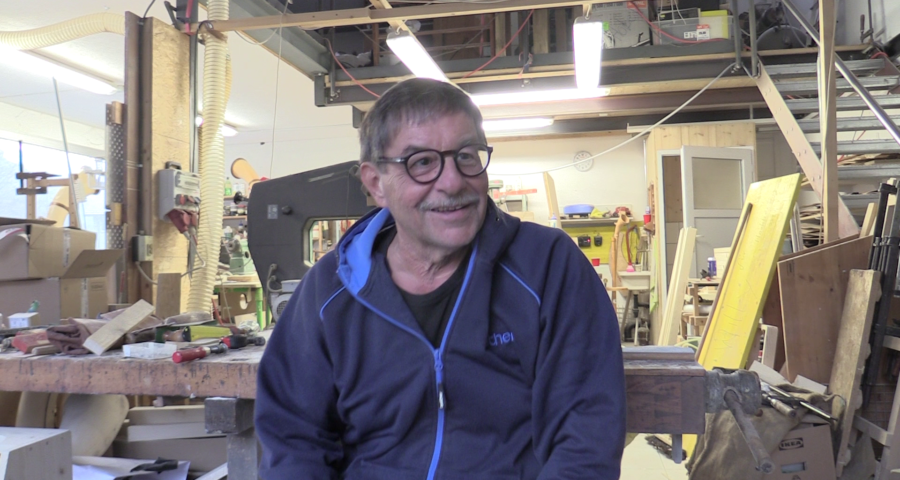
Leave a Reply